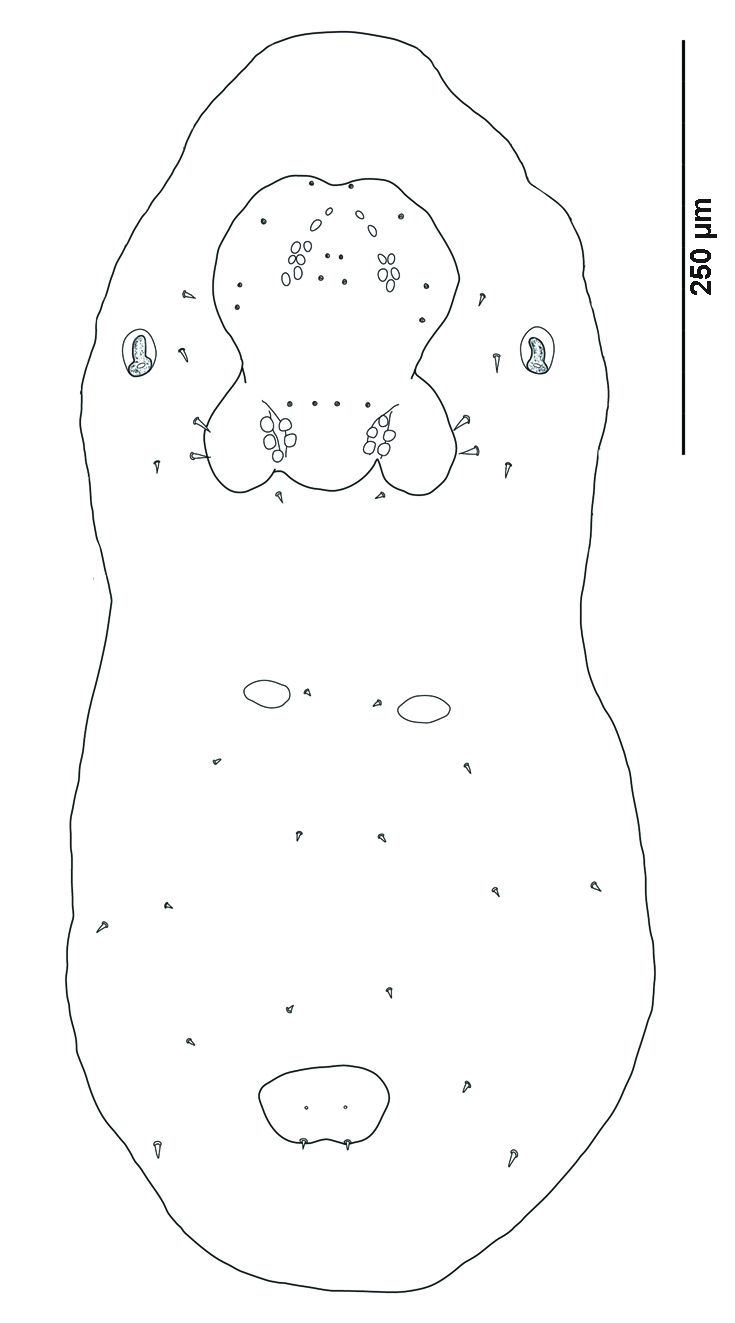Ptilonyssus calvaria Knee, 2008
Fig 112 (a). Ptilonyssus calvaria female dorsal habitus.

Fig 112 (b). Ptilonyssus calvaria female dorsum.

Fig 112 (c). Ptilonyssus calvaria female venter.
North American host records:
Emberizidae:
Spizella passerina,
Chipping Sparrow
(Knee et al. 2008)
Diagnostic characteristics:
- two dorsal shields, podosomal and pygidial shields
- posterior margin of podosomal shield is trilobed
- st1 on with st2 and st3 off the sternal shield
- subapical ventral setal pair on tarsus IV are relatively long strong spikes
- six pairs of ventral opisthosomal setae
- five pairs of mesolateral setae
- mesolateral setae all approximately equal in length, there are not two pairs
of setae that are twice as long as another setal pair
- subposterior
pair of dorsal podosomal setae are half as long as the
longest mesolateral setae
- cribrum does not extend to posterior end of anal shield
- paranal setae level with anal opening, paranal and postanal setae are unequal in
length
References:
Knee, W. 2008.
Five new species of Rhinonyssidae (Mesostigmata) and one new species of
Dermanyssus
(Mesostigmata: Dermanyssidae) from
birds of Alberta and Manitoba, Canada. Journal of Parasitology,
94: 348-374.
Knee, W., Proctor, H., and Galloway, T. 2008. Survey of nasal mites (Rhinonyssidae,
Ereynetidae, and Turbinoptidae)
associated with birds in Alberta and
Manitoba, Canada. Canadian Entomologist, 140: 364-379.